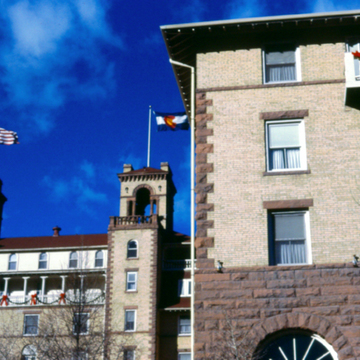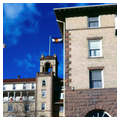Walter Devereux's 200-room Italian Renaissance Revival hotel has square corner towers with Palladian belvederes, a design that Theodore von Rosenberg, Devereux's Viennese architect, may have borrowed from the Villa Medici outside Rome. Massive fanlighted, round-arched windows flood the first floor with light. Rising six stories, the honey-colored brick beauty has a foundation, first-story facing, and trim of Peach Blow sandstone. The hotel's U-shaped plan shelters a central court with terraced formal gardens, a Florentine-style fountain and trout pool, and outdoor cafe. During World War II the U.S. Navy converted it to a convalescent hospital. A 1980s restoration revived the Palm Room, with 18-foot-high windows; the 5,000-square-foot Devereux Room, with its barrel-vaulted ceiling; a large ballroom; and the spacious lobby.
Distinguished guests have included Theodore Roosevelt, who stayed here on hunting trips. During his 1905 visit, the president posed on the front lawn with an enormous bear he had killed. Then and there, if local folklore can be believed, his daughter, Alice, coined the term “teddy bear.”




